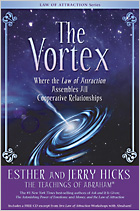Spiritual self-protection: Are you a leaky bucket?
By Pamela Miles
Reiki is safe, but is the practitioner safe?
If you've ever stepped away from giving a Reiki treatment feeling that a piece of the interaction was lingering, it may not be your imagination. Practicing Reiki is safe in and of itself, but when we place our hands to offer treatment, there may be more than Reiki happening. It’s not that we’re treading into dangerous territory; it’s more of a leaky bucket dilemma.
Remember that song from childhood, There’s a hole in the bucket, Dear Liza, Dear Liza? The song takes us through a narrative of how to fix the bucket only to come right back to the problem that there is, after all, a hole in the bucket, which of course we already knew.
It’s possible to carry the Reiki connection beautifully, but not be quite as competent in carrying ourselves. If your Reiki treatments are leaving you with negative after effects, they may be an indication of holes in your bucket, what we might call leaky boundaries.
Some people naturally have strong boundaries; most of us have to work at it. People who are interested in healing may be more sensitive to suffering than others. Having experienced Reiki’s benefits in our own lives, it’s natural to want to share Reiki with others. Natural, yes. Understandable, of course. But also where the Reiki practitioner is likely to run into trouble.
Why? Because caring for others—giving to others—often involves a blurring of boundaries. And people who are sensitive are not naturally good at boundaries to begin with. Yet maintaining clear, compassionate boundaries, and the detachment that comes with them, is our best shot at keeping ourselves and our clients safe.
Where does this leave us? Are those of us who are sensitive, who feel other’s suffering so acutely and are motivated to relieve it, doomed to be suctioning it off and taking it home with us? Not at all. At least not if we’re willing to do the work needed to stay balanced.
How can we best protect ourselves—and our clients? By making the effort to be, and to remain, as clear and aware as possible during all phases of the interaction—before, during, and after. What we will take away from a Reiki interaction—whether it will be a sense of well-being or negative transference—is largely determined by what we bring to it. If we are clear going in, it’s more likely that we’ll be clear going out.
As Reiki practitioners, we want to help, and we don’t want to hurt. We also want to be recognized, and to be seen in a good light. We want to feel that our efforts are effective, useful, and appreciated. These are all aspects of our motivation, and it’s important to be aware of each of them.
We may have additional motivations, either for offering treatment in general, or for wanting to treat a specific person at a specific time. For example, every spring I organize practitioners to offer 120 Reiki sessions at the JCC Spa Day for Women with Cancer. Although I understand why a Reiki practitioner who lost her mother to cancer would want to be part of this, it’s not necessarily the right match, especially if the loss was recent. It’s my job to do everything possible to ensure the comfort and safety of all the participants, the patients and practitioners. A practitioner who is addressing profound grief is probably, and understandably, not available to serve in the clearest, safest way.
Daily self-treatment is the beginning of the work needed to maintain clear boundaries. There are also actions we can take during treatment—keeping our eyes open and focused on our clients, staying out of meditation, staying present in our bodies (flexing large muscle groups helps), following a treatment protocol. The boundary patrol continues with ongoing contemplation and self-inquiry.
Clarity is the key to safety, and self-awareness is the key to clarity. When we offer treatment to others, it’s our responsibility to structure the interaction to maximize safety. We can start by taking stock. Here are some questions that Reiki practitioners offering treatment to others might contemplate:
- What are my motivations for being a Reiki practitioner?
- What are my motivations for giving a particular treatment?
- Am I willing and able to simply offer this treatment and remain detached from the outcome, or am I trying to achieve a particular result?
- Do I have the confidence to allow my client to have her own experience, even if it is different than mine?
- Am I able to support my client in exploring her experience without judging or interpreting it, even if her experience seems to be negative, and even if she asks me to interpret it for her?
This is not a “been there, done that,” but rather, a continuing, disciplined self-monitoring. Reiki is easy, very easy. Being human, keeping clear boundaries—that takes some effort.
The challenge of unwanted negative energy transference is not limited to Reiki practitioners. It’s common to all caregivers, whether they are professionals or lay people. Pamela explores this further in her class Spiritual Self-Protection, which she is offering in New York City on October 4 and in Baltimore on November 15.





























































